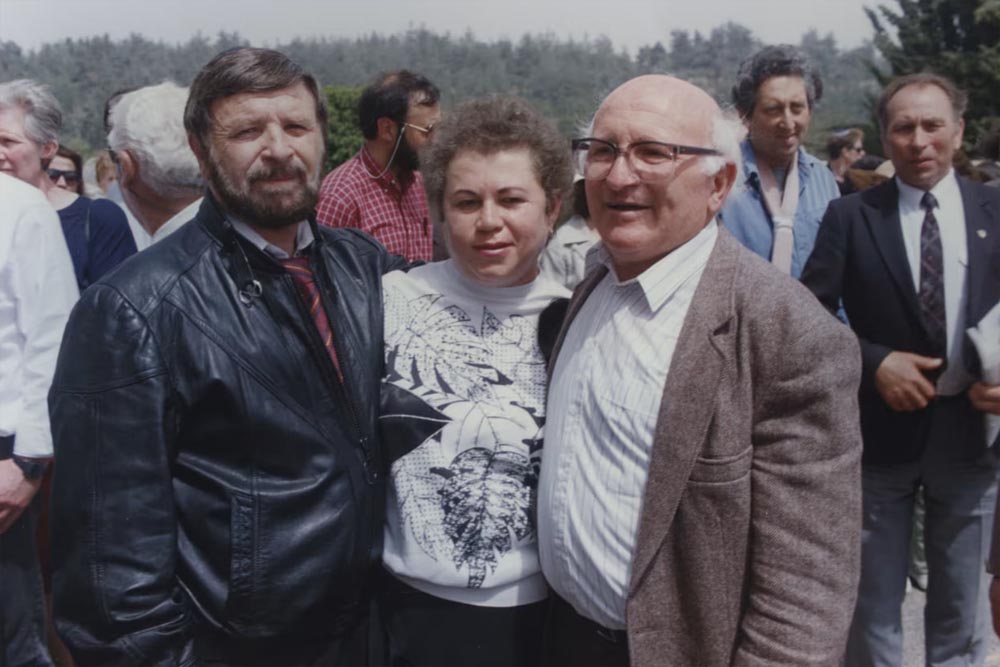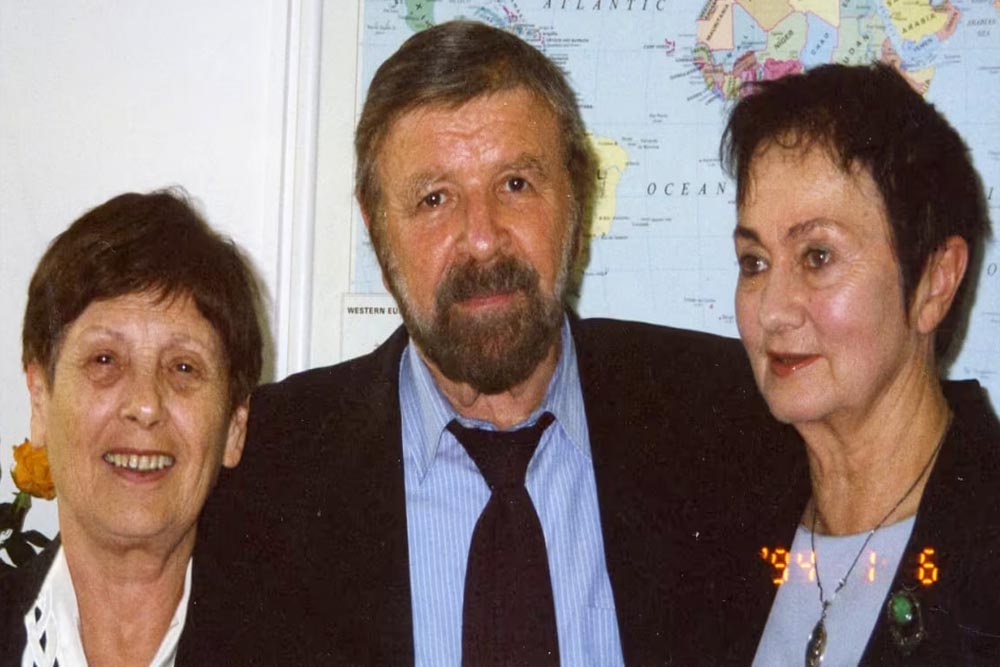Bank of Portraits / Shchepaniuk Roman and Yuliia, Horal Mykhailo and Hanna, Potezhnyi Mariia and Tadeush

Shchepaniuk Roman and Yuliia, Horal Mykhailo and Hanna, Potezhnyi Mariia and Tadeush
Roman and Yuliia Shchepaniuk lived in the town of Boryslav in the Lviv region. During the Holocaust, the couple hid in their home the Jewish Vais family: Meer, Henia, and their children Aron, Mila, and Shevakh, who had previously lived in the neighborhood.
At least six major "actions" of extermination of Jews took place in the city of Borysłav. Some of the condemned were shot on the spot, others were taken to the Bełżec and Auschwitz death camps. The most massive action took place in August 1942, when about 5 thousand people were sent to Bełżec. In October 1942, more than 1,020 Jews were deported, and in November another 600 were shot. The last mass extermination took place on May 25 – June 2, 1943, when about 700 Jews were executed.
Formal preparations for the creation of the Boryslav ghetto began in November 1941, but the process was delayed until October 1942 due to the threat of typhus spreading among the Jews. There was no closed ghetto with an entrance gate and guards in the city, as oil rigs were scattered throughout its territory. The area allocated to the Jews consisted of two parts: one for members of the “Jewish council” and skilled workers, the other for poorer members of the community. After the liquidation of the ghetto, able-bodied people were transferred to the Limanowa labor camp. It was liquidated by the Nazis in April 1944, when units of the Red Army approached the city.
The first pogrom in Boryslav, organized according to the Lviv scenario, took place on July 3–4, 1941, when about 300 Jews were killed. It was accompanied by looting by residents of the surrounding villages. This was the first of the anti-Jewish actions in Boryslav.
From the first days of the occupation, the Jewish Vais family hid with their Ukrainian neighbors, the Shchepaniuk family. It was only in August 1942 that they moved to the ghetto, but in October they were forced to escape deportation. Fleeing the ghetto, the members of Vais family were scattered. Meier and his eldest son Aron managed to get back to the Shchepaniuk family, while Henia and her two younger children asked for shelter from Mykhailo and Hanna Horal. In search of salvation, Henia's sister Olena Hrinfeld and her son Milek ran to the Vais house. The Shchepaniuk family hid them too. In the spring of 1943, the Jews had to change their hiding place again. They moved to the basement of a nearby kindergarten. There, they were cared for by Mariia Potezhna and her son Tadeush. Before the Vais family arrived, Mariia had already hidden Israel Bukhman in the basement. All eight Jews survived thanks to Ukrainian rescuers.
After the war, they moved to Poland, from where the Hrinfeld family emigrated to Canada, and the Vais family to Israel. Aron Vais became a Holocaust researcher, and his younger brother Shevah became a politician, serving as speaker of the Knesset and, from 2000 to 2004, as Israel's ambassador to Poland.
In 1984, Yad Vashem recognized Roman and Yuliia Shchepaniuk as Righteous Among the Nations, in 2000, this title was awarded to Mykhailo and Hanna Horal, and in 2001, to Mariia Potezhna and her son Tadeush.
Svitlana Demchenko
Kyiv
The National Museum of the History of Ukraine in the Second World War
-
fingerprintArtefacts
-
theatersVideo
-
subjectLibrary
